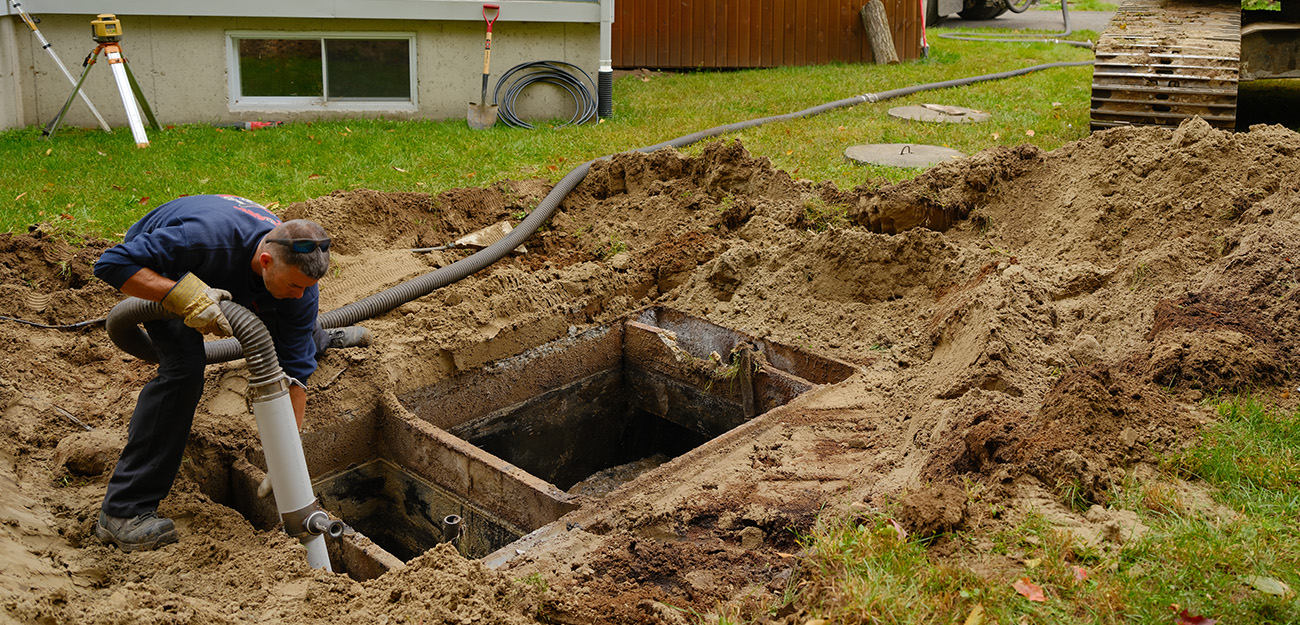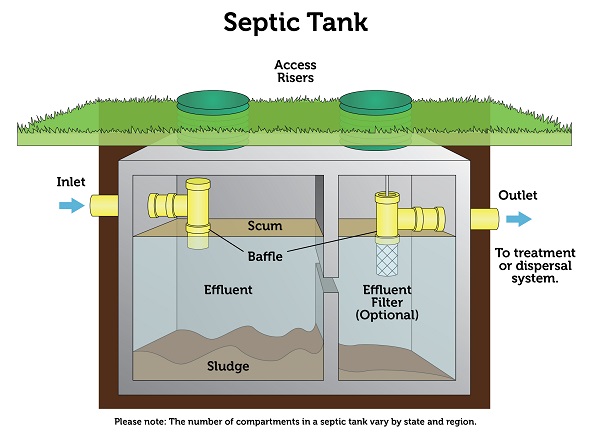Septic tanks are crucial in managing wastewater for properties not connected to municipal sewer systems. Proper installation and maintenance are essential to ensure your septic system functions efficiently and remains in good working order. This guide provides a comprehensive overview of installing and maintaining septic tanks, helping you avoid common pitfalls and extend the life of your system.
Installation of Septic Tanks
Choosing the Right Septic Tank
- Tank Material: Septic tanks are typically made from concrete, fiberglass, or plastic. Concrete tanks are durable but may require additional maintenance to prevent cracks. Fiberglass and plastic tanks are lightweight and resistant to corrosion but can be more expensive.
- Tank Size: The septic tank size should be based on the number of bedrooms in your home and the estimated daily wastewater flow. A professional can help you determine the appropriate size for your needs.
Site Preparation and Tank Placement
- Site Assessment: Conduct a thorough site assessment to determine the best location for the septic tank. The site should be level, away from trees and large plants, and have sufficient space for the drain field.
- Excavation: Excavate the area where the septic tank will be installed. Ensure that the excavation is deep enough to accommodate the tank and that the area is properly graded to facilitate drainage.
Installing the Septic Tank
- Tank Placement: Carefully place the septic tank into the excavated hole, ensuring it is level and properly aligned. Connect the inlet and outlet pipes to the tank, ensuring all joints are secure.
- Backfilling: Fill the area around the tank with soil, packing it firmly to prevent settling. To prevent damage, avoid using heavy machinery over the tank.
Maintenance of Septic Tanks

Regular Inspection and Pumping
- Inspection: Regularly inspect your septic tank to check for signs of damage or malfunction. Look for issues such as leaks, cracks, or unusual odors.
- Pumping: Septic tanks should be pumped out every 3 to 5 years, depending on usage and tank size. Regular pumping prevents the buildup of sludge and scum, which can lead to system failures.
Proper Waste Management
- Avoid Flushing Non-Biodegradable Items: Do not flush items like diapers, wipes, or sanitary products down the toilet, as they can clog the system and cause damage.
- Use Septic-Friendly Products: To minimize the impact on your septic system, choose household cleaning products and toilet paper that are labeled as septic-safe.
Protecting the Drain Field
- Avoid Heavy Traffic: Prevent heavy vehicles or equipment from driving over the drain field, as this can compact the soil and damage the system.
- Maintain Vegetation: Keep the area around the drain field clear of trees and large plants. Roots can invade the drain field and disrupt its function.
Common Issues and Troubleshooting

Signs of Septic System Problems
- Slow Drains: If drains in your home are slow or backed up, it could be a sign of a full or clogged septic tank.
- Pooling Water: Standing water or soggy areas around the drain field can indicate system failure or overloading.
Troubleshooting Tips
- Check for Clogs: Inspect and clear any clogs in the inlet or outlet pipes. If the problem persists, consult a professional.
- Consult a Professional: If you suspect a serious issue with your septic system, contact a licensed septic service provider for a thorough inspection and repair.
Proper installation and maintenance of septic tanks are essential for effective wastewater management and the longevity of your system. Following the guidelines outlined in this guide, you can ensure that your septic system remains in good working condition and avoid costly repairs. Regular inspections, timely pumping, and responsible waste management practices are key to maintaining a healthy septic system. For complex issues or concerns, always seek the expertise of a professional septic service provider.

